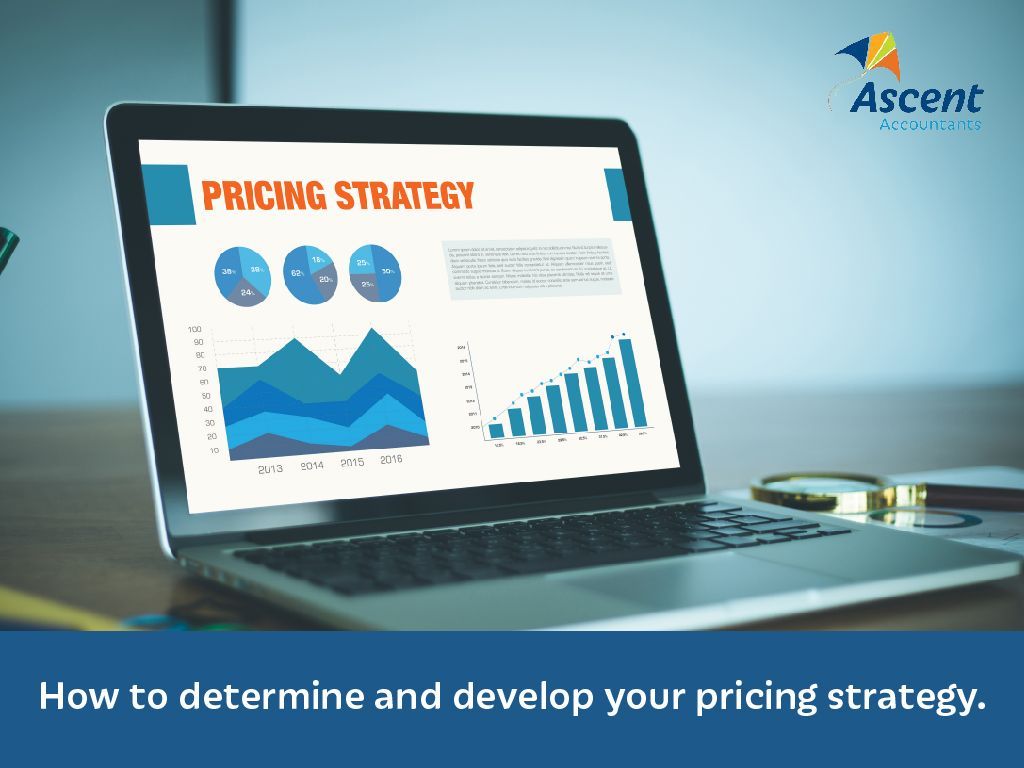How to determine and develop your pricing strategy

Developing an appropriate pricing strategy is fundamental to your business.
It affects your sales volume, revenue and profitability, as well as establishes the position of your brand within the market.
A well-considered pricing strategy ensures your business covers costs, achieves desired profit margins and aligns with your overall marketing strategy and business goals.
There are a number of strategies you can employ when setting your prices, including those based on the cost, competition, perceived value and product.
Cost
Cost-based pricing strategies set prices primarily on the cost of producing, distributing and selling a product or service, such as:
Cost-plus pricing: adding a small mark-up to the cost of producing the product or service. If you calculate your costs accurately, this strategy keeps your price competitive while still making a profit.
Charge per hour: often used by service-based businesses, this strategy calculates an hourly rate that encompasses all the relevant business costs, including wages, taxes and benefits.
Competition
Competition-based pricing strategies set prices based on those of competitors, aiming to stay competitive in the market without sacrificing profitability.
Going rate pricing: setting prices close to, or at the same level as, the market price leader. It’s a strategy that allows businesses to stay competitive without eroding profit margins.
Value
Value-based pricing strategies set prices based on the perceived value of a product or service, rather than the actual cost of production or market rate.
Value pricing: this strategy is based on what customers think a product is worth, rather than costs. This value is determined through market testing.
Premium pricing: this strategy sets prices at a higher level to signify the prestige, luxury or exclusive value of the products or services. At a premium price, customers generally have higher expectations of quality, performance and service.
Product
Product-based pricing strategies involve setting prices based on specific attributes of the product or service.
Penetration pricing: setting a low initial price on a new product or service to generate high sales or capture a significant market share. Once this is achieved, prices are gradually increased to normal levels.
Skimming pricing: setting a high initial price which aims to target customers who desire highly valued products or services in high demand. After the required profits are made, the price is subsequently lowered to appeal to a broader market.
Loss leader pricing: aims to entice customers by offering a product or service below cost price. This is to encourage customers to purchase additional products or services with higher profit margins to offset the initial loss.
Do your research
Research is key when determining the optimal price for your product or service.
Market testing is a valuable tool for gauging how much your customers are prepared to pay for your product or service. By researching purchasing behaviour, pricing of similar products/services and features valued by customers, you can develop a price comparison and test different options to establish an acceptable price range.
You should know who your direct competitors are and how your business compares to them. This information can help determine your price point. While competitor prices can provide guidance, it’s important not to rely too heavily on them and undervalue what you have to offer. Assess the overall value of your business compared to your competitors, including special features, quality and customer service.
External influences can also affect the price of your product or service, such as:
Price sensitivity or the degree to which price fluctuations impact consumer demand. This is the willingness of customers to modify their buying habits in response to price changes.
The level of demand for a product or service can influence pricing by creating balance between supply and demand. If demand is high, relative to supply, businesses can likely increase prices. Conversely, if demand is low, they may want to lower prices to stimulate demand and remain competitive.
Competition can influence pricing based on market dynamics and customer choices. In a highly competitive market, businesses may lower prices to attract customers. While the less competition you have, the more demand for your product.
Government regulation can affect your pricing due to additional fees or levies.
By conducting thorough research and continuing to monitor these influences, you can establish optimal pricing strategies for your business to remain competitive and profitable.
Launching a business?
If you’re starting a business in Perth, consider Ascent for help setting your business up for success. We’ll guide you through the set-up process and ensure you’re positioned to run a profitable venture.
Contact us today to get started.
Need help with your accounting?








